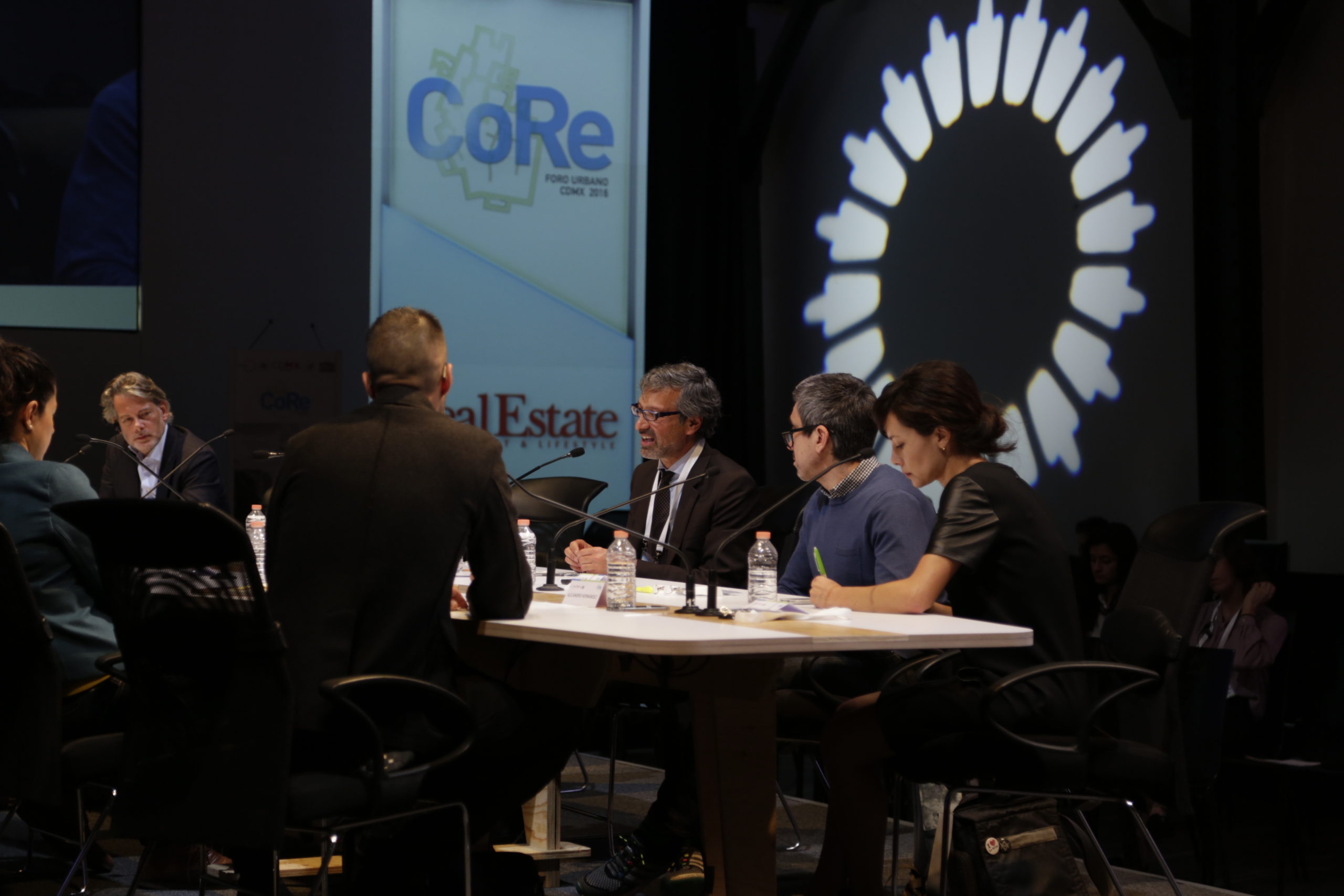First Round Table: Mobility
- Mobility must be considered from a perspective where there will be over 5 billion vehicles on roads around the world in the near future.
- There are 5.5 million vehicles in Mexico City.
- The young people of today drive less than their parents and grandparents.
Mexico City, December 6, 2016.- The first roundtable of the CoRe Urban Forum CDMX 2016 was led by Camilla Ween and Jan Gehl, with the participation of Laura Ballesteros, Rodrigo Díaz, Edgar Farah, Onésimo Flores, Javier Hidalgo, Michael Kodransky, Andrés Sañudo and Florencia Serrania as panellists to discuss mobility in large cities. To analyze this challenge in a context where the 21st century comes close to completing its second decade, three topics were discussed: integrate urban development with public transport, which has been neglected in the past; succeed in finding better mobility solutions in terms of quality, especially for large-scale public transport (many boast of using the London or New York subway but it does not have the same reputation in Mexico); and insist on finding alternatives to the use of the car.
The experts argued that Mexico City is not so different compared to other cities, given that its citizens suffer from the same consequences coming from vehicles. They said that fossil fuels are certainly killing people and that a concrete action plan to make the city and planet healthier is sorely needed. Concrete ideas must be found in order for people to live side-by-side in truly beautiful cities.
In her participation, the architect and urban planner, Camilla Ween, highlighted two crucial questions for mobility projects to have a real impact: the proper use of public funds and changing the way people think about being urban residents. “One such example worked in London, in one of the most densely frequented stations. The station was closed several times due to the amount of people using it. What we did was to create a solution outside the station for people to move without needing to use a car, since the subway was insufficient. This led to the Crossrail, a combination of train and subway”.
Ween added that each new mobility project must seek to improve the entire surrounding area, by identifying problems and solving them. This means going out to find areas of opportunity in the zones involved. “More can always be done beyond the scope of the original project. If possible, all the weaknesses of the zone should be identified and fixed: traffic, access to disabled people, allowing foot traffic between two separate neighborhoods, building green areas, and more,” added Ween.
For his intervention, the architect and urban planner, Jan Gehl, expressed his skepticism towards automatic or electric cars and whether these could help improve mobility: “it is estimated that 5 billion vehicles will hit the roads in the near future”.
For Gehl, cars, even those with environmentally friendly technology, are “stupid for the modern man. It is antiquated to use four rubber tires to move while the atmosphere is being affected. In the future, we must walk, ride bicycles and have an ideal transportation system”.
Nevertheless, Gehl did strike an optimistic tone: according to his research, the young people of today drive less than their parents and grandparents. “The antiquated technology of the car has a limited time,” he stated.
As part of the roundtable, Onésimo Flores provided some facts: “the challenge Mexico City faces is context. There are currently 400 vehicles for every 100,000 residents. But between 1980 and 2010, the population of Mexico City grew by 20,000 people, while its conurbation grew by 5 million people, most of whom travel to the city for school or work. In reality, we must consider urban development projects.”
In her contribution, Florencia Serranía, an expert in technological transport solutions, mentioned that mobility is not the same for those living inside Mexico City and those living in its metropolitan area. She said that the implementation of a proper transportation system would cost at least 30 million pesos a year in mobility investments.
According to Laura Ballesteros, an expert in mobility and sustainable transportation, 73% of the federal infrastructure budget goes to cars, which only affect 5.5 million cars. It is thus urgent to ensure better management of transportation means. Ballesteros also provided an optimistic touch: today, 60% of people in Mexico City use public transport, as opposed to just 20% a decade ago.
One of the most worrying aspects of mobility in Mexico City was mentioned by Javier Hidalgo, who said it is important to differentiate active mobility and vehicular mobility. The latter is very alarming, even beyond environmental pollution, as it is a contributing factor to diabetes and obesity due to a sedentary lifestyle.


